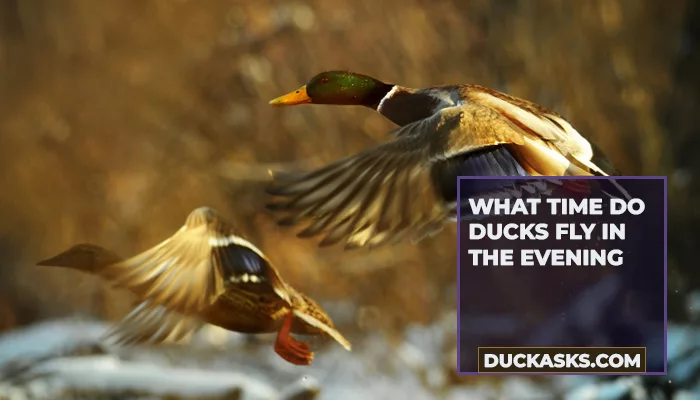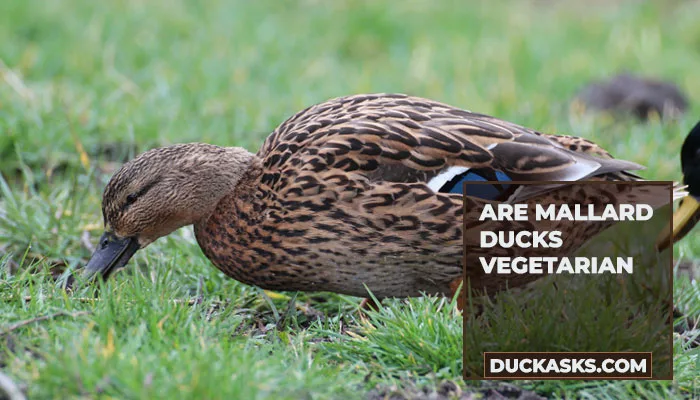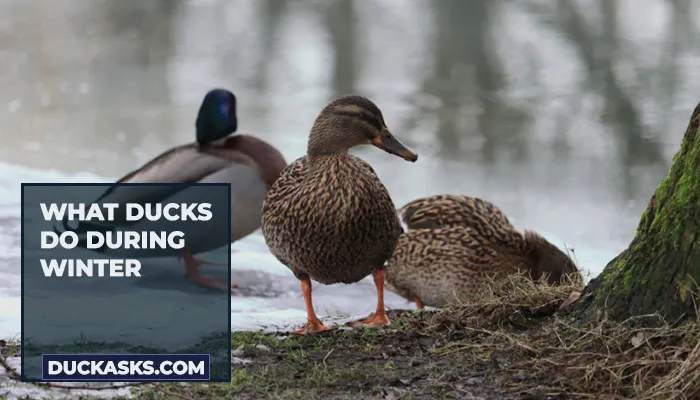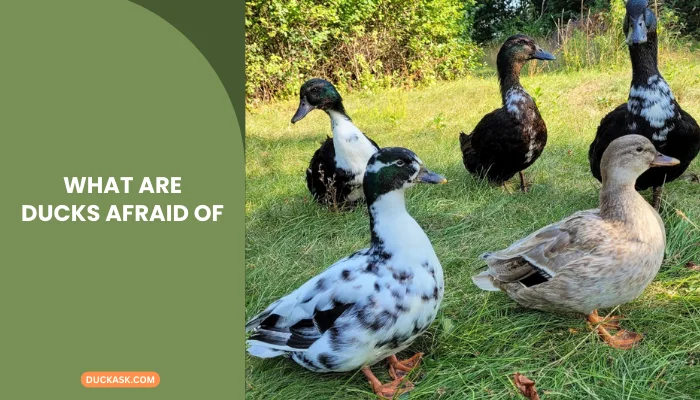Are Wood Duck Pairs Always Together?
Unlike other ducks who reside near water, wood ducks require wooded cover for nesting, and thus their name came to play. Besides, they aren’t monogamous like other waterfowl.
Now, this might tingle your curiosity as to know, “Are Wood Duck Pairs Always Together”? If they aren’t monogamous, then why are they often seen side-by-side? Well, it’s probably because you have spotted them throughout the breeding season when they mate and stay up close to each other.
However, once the breeding season expires, the male drake will be gone in pursuit of a new suitor or just to live alone, avoiding family affairs. To put more emphasis on this topic, I have answered some of the most-asked questions about wood ducks and their pairing habits.
Check it out!
Looking for more articles about duck habits:
Why Are Wood Ducks Always in Pairs?
For starters, wood ducks aren’t necessarily always in pairs since they are seasonally monogamous species of all waterfowl.
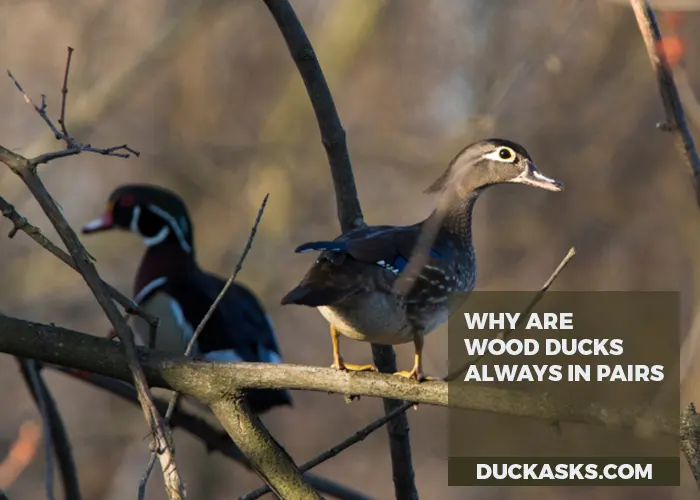
It’s all about the timing and the diversity in their pre-mating and post-mating behavior that determines whether the ducks are in pairs or not. Let me explain precisely in the upcoming segments.
Do Wood Ducks Have to Be in Pairs?
Wood ducks are known for their strong pair bonds, and they often form monogamous relationships that last for multiple breeding seasons.
However, it is not uncommon for wood duck pairs to separate temporarily or even permanently during certain times of the year.
So, no, wood ducks don’t have to be in pairs. It entirely depends on the breeding and non-breeding season.
Breeding Season: During the breeding season, wood ducks will form pairs and mate. The males will display their colorful plumage to attract a female, and once a pair is formed, they will nest and raise their young together.
They will defend their nest territory and spend most of their time in close proximity to one another. However, after the breeding season is over and the young ducks have fledged, the pairs will often break up, and the birds will move on to different areas.
Non-Breeding Season: During the non-breeding season, wood ducks can be found in small flocks or alone. They are migratory birds and will often travel in flocks to different areas to find food and suitable habitat.
In the winter, they can be found in coastal marshes, swamps, and rivers, while in the summer, they will be found in wooded areas near water.
Other Circumstances
In captivity, wood ducks can live alone or in pairs. In aviaries or duck ponds, they can be kept in pairs or small groups. But it is important to provide them with plenty of space and a suitable environment to ensure their well-being.
In conclusion, they can live alone or in pairs depending on the space and environment provided. While wood ducks are known for their inseparable pair bonds, it is not always the case that they are always together.
Factors such as the breeding and non-breeding seasons, migration, and survival can all play a role in determining whether wood duck pairs are together or not.
What Are the Common Wood Ducks Mating Behaviors?
Wood ducks are known for their distinctive and colorful plumage, which makes them a popular species among birdwatchers and conservationists.
Their mating behavior is unique and fascinating, as it involves a plethora of different rituals and behaviors that occur throughout the breeding season.

The breeding season for wood ducks typically begins in late April or early May and lasts until August. Let’s see how male wood ducks flirt and how their mating behavior plays out!
Male Wood Duck Flirtation Skills and Mating Behavior
Male wood ducks, also known as American wood ducks, are known for their elaborate and colorful plumage. During courtship season, energized and made more aggressive by hormones, male ducks also spend a lot of time chasing each other away from the females.
These same hormones also play a part in enlarging their genitals each spring. Unlike almost all other birds, male waterfowl are unusual in that they possess penises. Each breeding season, these organs grow anew in size.
Flirtation Tactic-1
One way that male wood ducks flirt is through displays of their feathers. They will puff out their chest, fan out their tail feathers, and spread their wings to showcase their bright and intricate patterns.
This serves as a visual cue to females that the male is healthy and strong, making them desirable mates.
Flirtation Tactic-2
Another way that male wood ducks flirt is through calls and vocalizations. They will make a variety of vocalizations, including a distinctive whistle, to signal their presence to females.
These calls can also be used to establish a territory and signal their readiness to breed. Additionally, male wood ducks will engage in courtship rituals such as preening, feeding, and swimming with a potential mate.
These behaviors demonstrate the male’s ability to provide for a female and her future offspring.
Female Wood Duck Flirtation Skills and Mating Behavior
Female wood ducks, also known as wood hen or Carolina ducks, typically engage in a courtship ritual before mating. During this ritual, the females will display a variety of behaviors to attract a mate.
They will typically arrive on the breeding grounds later than males and will begin to search for a suitable mate. Interestingly, they will often visit several different territories before making their final choice.
Once a female has selected a mate, the pair will engage in an array of courtship rituals, such as preening, fluffing their feathers, making calls or vocalizations, and displaying their plumage.
In addition, females may also engage in “Head Pumping,” which is a repetitive up-and-down movement of the head.
This behavior is thought to be a visual signal to males, indicating the female’s interest in mating. Overall, wood duck females use a combination of visual and vocal cues to attract a mate.
An Interesting Fact
Unlike male wood ducks females don’t need to exhibit much game to win over a male’s heart, as the number of male suitors overpowers females. For the most part, one female wood duck seems to attract more than one drake inadvertently.
And that’s quite a scene, and I must tell you that you will see the male ducks being protective over their desired female and they even fight one another in the process of attracting that one female wood duck.
Also, let’s not forget that it’s always the female’s choice whether to mate or not. In her highest glory, she proceeds to pick the ideal suitor for her among many admirers and gives the male duck the consent to impregnate her.
Yes, you heard it right, female wood ducks can position their genitalia in a way where the male assaulter’s (male ducks who force mating) sperm won’t penetrate inside; thus the eggs won’t be fertilized.
What Happens After the Pair Is Formed? – Do they Stay Together?
To comprehend this, you need to focus on two possible scenarios.

Scenario One
Once a pair has formed, the male will continue to defend his territory against other males, while the female will begin to build a nest. Wood ducks typically nest in tree cavities, and the female will use twigs, moss, and grasses to construct a nest that will accommodate her eggs.
After the nest is built, the female will lay her eggs, which are typically laid one at a time for several days. The male will continue to defend the nest and the surrounding territory during this time.
Once the eggs have hatched, the female will care for the young, while the male will continue to defend the territory or leave the nest for good. The young will typically fledge in about 8 weeks, at which point they will leave the nest and begin to explore their surroundings.
Scenario Two
The female wood ducks will build the nest, incubate the eggs and do everything necessary for the squabs to grow up in a healthy and nurturing environment.
But the plot twist is, in this scenario the male will be absent, probably with other flocks, looking for food and finding a place close to a food source without giving a hoot about the female wood duck and the children.
When the breeding season reoccurs, the male wood ducks will be looking for a new female to mate with, and the cycle might continue like that.
A Fact
It’s solely their choice whether to stay or not and as they are seasonally monogamous, they can decide to look for another mate during the upcoming courtship season.
Hopping on to a new partner each year that stays for only a good few months is pretty common among wood ducks. This is no less than a TLC reality drama or Tinder matchmaking ritual if you think about it.
Sometimes, the male wood duck doesn’t even stay close to the incubating female or wants to see his eggs being hatched. So, the idea of them always being together is a hoax.
Long story short, the mating behavior of wood ducks is a complex and fascinating process that involves a number of different rituals and behaviors that occur throughout the breeding season.
Are Ducks Always in Pairs?
Wood ducks are known to travel in pairs during the breeding season. This typically occurs from late spring to early summer. During this time, the male wood duck will establish a territory and court a female for mating.
Once a pair has formed, they will typically stay together for the duration of the breeding season. During the non-breeding season, wood ducks are known to form larger flocks.

These flocks can consist of both males and females and can include both adults and young birds. They are often seen foraging for food in wetland areas or roosting in trees at night.
It is important to note that while wood ducks may travel in pairs during the breeding season, they are not entirely monogamous. Both males and females may form new pairs in subsequent breeding seasons.
Additionally, while a pair may stay together during the breeding season, they may not necessarily stay together during the non-breeding season. Their social behavior is influenced by their breeding cycle and their environment.
What Happens When One Wood Duck Dies?
When one of a pair of wood ducks dies, the remaining duck will typically go through a period of mourning. During this time, the surviving duck may become more solitary and less active and may also call out frequently in search of its lost mate.
After a period of mourning, the surviving duck may begin to seek out a new mate. Wood ducks are seasonally monogamous, meaning they typically form long-term pair bonds with a single partner, but if one of the pair dies, the surviving duck will often seek out a new mate to form a new pair bond with.

The process of finding a new mate can take some time, as wood ducks tend to be picky when it comes to selecting a new partner. And the surviving duck may spend time courting multiple potential mates before finally selecting one to form a new pair bond with.
It is also possible that the surviving duck may not be able to find a new mate and may instead choose to live a solitary life.
However, in the breeding season, if a pair loses a member, the remaining member may lay eggs but usually won’t have a mate to incubate them, and the eggs will be left to hatch on their own. This can cause a decrease in the population of wood ducks in that area.
End quote
So, putting an end to the question “are wood duck pairs always together” I want to conclude that wood duck pairs don’t have to be together in all circumstances. It depends on the breeding and non-breeding season as well as their own choice.
Having said that, if you have further queries about ducks or want to know more feel free to connect with us through Facebook, Twitter, and Pinterest.
Article References:
- https://www.ducks.org/conservation/waterfowl-research-science/understanding-waterfowl-courtship-and-pair-bonding
- https://www.hww.ca/en/wildlife/birds/wood-duck.html
Image Credit:
- Canva.com/photos

